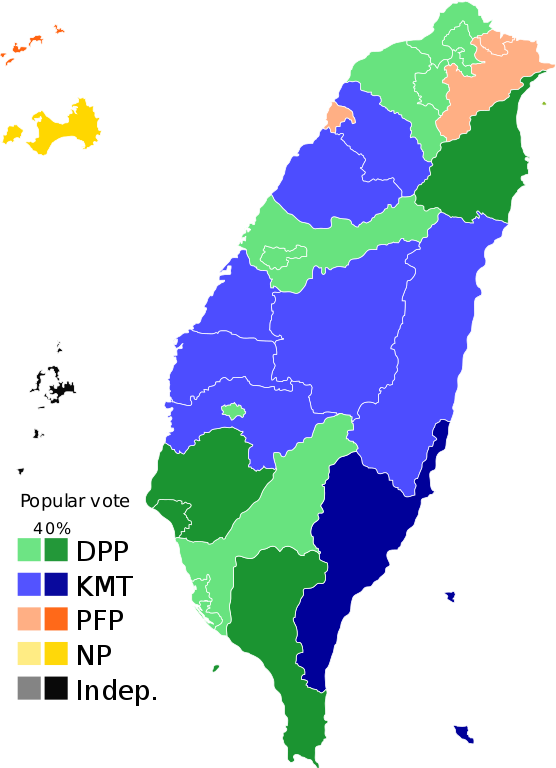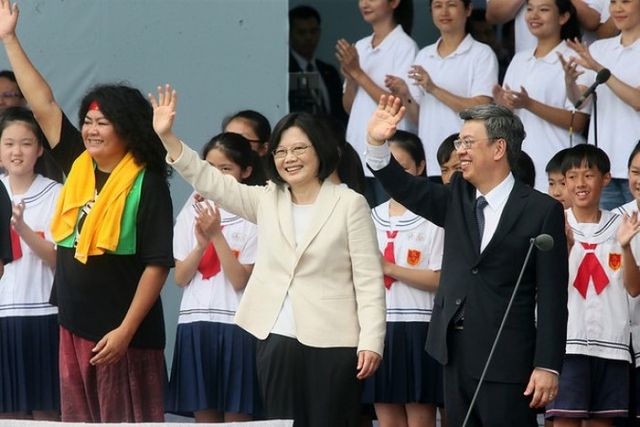The upcoming local elections will give us a chance to gauge public satisfaction with Tsai Ing-wen’s DPP government and to evaluate the prospects for the 2020 national elections.

On Nov. 24, 2018, Taiwan will hold its combined local-level elections. Thousands of posts are up for grabs, from the capital’s mayor down to grassroots village and borough chiefs. Although there are still seven*(see below*) months to go before voting day, this election is already starting to feel like the longest local campaign I can remember over the last three decades of observing Taiwan’s elections.
Media reports suggest that for some races the campaign for nomination began soon after the national elections in January 2016. The length of campaign, levels of spending and competition for party nomination give us a sense of how important these elections are.
Why should we care about these local elections? These are the first real test of public opinion since the Democratic Progressive Party (DPP) won its landslide national elections in January 2016. With the next round of national elections to be held just 14 months after these elections, they can be viewed as a mid-term of sorts.
Over the last two decades we have seen local elections, at least down to the local assembly level, increasingly influenced by the national political climate. So we can treat the upcoming local elections as a chance to gauge public satisfaction with Tsai Ing-wen’s DPP government as well as to look ahead at the prospects for 2020.
So what should we expect of these elections? How can past election experience help us to understand these elections? And what aspects of the campaign should we particularly be paying attention to? Looking back at previous rounds of local elections, we can categorize them into three broad types: critical, maintaining and deviating elections.
Evans and Norris define critical elections, as “exceptional contests which produce abrupt, significant and durable realignments in the electorate with major consequences for the long-term party order.” An example is Labour’s domination of British politics after winning power in 1997.
In Taiwan, the Kuomintang’s (KMT) victory in 2005 represents a critical election, as it was followed by a series of subsequent victories. More recently, the DPP’s local success in 2014 is a potential case, as it was followed by a similar landslide victory at the national level in 2016.
Maintaining elections are those that feature continuity, and are naturally the most common in stable party systems like Taiwan’s. In contrast, deviating elections are one-off shock results that are soon followed by a return to normality.
The DPP’s local election success in 1997 was then followed by a seeming return to normality in the national and local levels elections one year later with a KMT recovery. We often see deviating elections in second rank elections or by-elections, in which voters may wish to punish the incumbent party but are not yet ready for a national change of government.
Even though the DPP has lost some popularity after its peak in the run up to the 2016 elections, it remains the most popular party. If it can hold on to roughly the same number of seats, that will represent a success.
The current state of public opinion suggests 2018 will be a maintaining election, thus more like 2009-10 than 2005 or 2014.
In some respects 2018 should be a perfect chance for the opposition KMT to make a comeback. The DPP government has faced numerous protest movements and many of its own supporters have expressed impatience and frustration with the pace of reforms.
Moreover in 2014 the DPP won record numbers of local executive posts and city/county councillors, often in locations it had traditionally been weak, such as Hsinchu, Keelung and Taoyuan.
Even though the DPP has lost some popularity after its peak in the run up to the 2016 elections, it remains the most popular party. If it can hold on to roughly the same number of seats, that will represent a success. The fact that its nomination primaries appear much more competitive than the KMT’s suggests its politicians are cautiously optimistic.
More recently, Hung has been replaced as party chair with veteran and former vice president Wu Den-yih and this has helped stabilize the party and avoid another potential collapse.
At times it appears that rather than the KMT, the main opposition has been conservative social movements such as those opposed to marriage equality or pensions reform.In contrast the KMT has not been able to capitalize on the DPP’s problems.
For instance, the KMT’s party identification has only risen slightly since losing power.
The fact that the party initially elected the hardliner Hung Hsiu-chu as party chair after the 2016 defeat tells us something about the party membership. Hung had originally been nominated as presidential candidate but had to be replaced by Eric Chu in late 2015 due to low poll ratings and the growing view within the party that she was unelectable.
Similarly, if as some argue the KMT’s China policy was the core reason for its defeat in 2016, even after Wu became party chair there are no signs of adjusting its positions. If we compare the KMT’s reaction to defeat in 2016 with losing parties in 2000 or 2008, it looks like the current KMT has not yet actively tried to learn the lessons of defeat.
For the KMT to hold on to its current seats — and maybe win back one of two of its former strongholds — would represent a success.
What about other parties and the prospects of a third force? One of the key factors leading to the rise of social movements after 2008 was a widespread dissatisfaction with mainstream party politics. We often hear the term third force in Taiwanese political discourse.

This sentiment contributed to the rise of social movement-linked parties such as the New Power Party (NPP), Green Party and Social Democratic Party in the post 2014 period, with the NPP actually winning five national seats and becoming the third largest party in parliament.
One major weakness is that these alternative parties have neither merged into a single party nor at least created a coherent election alliance […] A failure to cooperate could have negative implications for diversity in Taiwan’s party system.
The local elections should pose a window of opportunity for smaller and alternative parties. Both mainstream parties are unpopular and the assembly elections are using a multiple member district electoral system, which does give more space for smaller parties. It is likely that we will see a continuation in the growing representation of movement party politicians, especially in larger cities.
However, this will not have a transformative effect on the local party system. For instance, the NPP will not become the second-largest party. This is partly due to their limited financial and human resources, as well as the tendency for voters to switch to candidate oriented decision-making in more grassroots elections.
This was a pattern faced for example by the Green Party back in 2014, when despite a strong campaign and favorable environment, it only made a limited local breakthrough.
One major weakness is that these alternative parties have neither merged into a single party nor at least created a coherent election alliance. This is something that will need to be addressed for the next round of national elections if they are to maintain momentum. A failure to cooperate could have negative implications for diversity in Taiwan’s party system.
It also looks unlikely that the traditional splinter parties — New Party (NP), People First Party (PFP) and Taiwan Solidarity Union (TSU) — that split away from the two mainstream parties will be able to build on their very limited revival in 2014.
All three appear to have past their sell-by date as they have struggled to find a role in today’s party system. The NP has been the most visible of the three but its continued drift towards ever more radical pro-unification positions, suggest it will struggle to hang on to its few remaining seats.
…..
A final area where I expect to see continuity but that is worth paying attention to will be representatives of conservative groups. In 2016 we saw the first openly pro-Chinese Communist Party called the China Unification Promotion Party (CUPP) as well as a party appealing specifically the military/civil servants and education sectors and the anti LGBT Faith and Hope Alliance.
Despite very heavy spending the CUPP was an electoral flop in 2016, with only 0.4 percent of the vote. Given that all three groupings have been prominent in many of the protests against the current government and seemingly have abundant financial resources, it will be interesting to see how these protests translate into political representation.
This will also give us a sense of how supportive the public is towards the often violent protests we have seen recently. Overall, though, I would be surprised if any of these groupings gain more than minimal seats.
Once this election is over, Taiwan will immediately be plunged into preparations for the national elections. For both the large and smaller parties, their performance in 2018 will have implications for the next round.
A significant KMT local victory could give the party the momentum to regain national power in 2020. However, my analysis suggests we will see a maintaining rather than a change election in 2018.
By Dafydd Fell, the Reader in Comparative Politics with special reference to Taiwan at the Department of Political and International Studies of the School of Oriental and African Studies (SOAS), University of London, and Director of the SOAS Centre of Taiwan Studies.
(The Taiwan Sentinel article was initially published in April this year. However this article could still provide a food for thought for those who have more keen interests in the upcoming November local elections in Taiwan.)
The 21st Century
